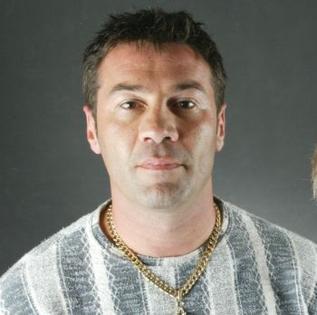
b: 1967
Evangelos Goussis
Summary
Name:
Evangelos GoussisNickname:
AngeYears Active:
2004Birth:
September 14, 1967Status:
ImprisonedClass:
MurdererVictims:
2Method:
ShootingNationality:
Australia
b: 1967
Evangelos Goussis
Summary: Murderer
Name:
Evangelos GoussisNickname:
AngeStatus:
ImprisonedVictims:
2Method:
ShootingNationality:
AustraliaBirth:
September 14, 1967Years Active:
2004Date Convicted:
May 29, 2008bio
Evangelos “Ange” Goussis was born on September 14, 1967, in Tashkent (then part of the Uzbek SSR), to Greek immigrant parents fleeing post-war turmoil in Greece. He arrived in Australia at about eight years old and later took on various blue-collar jobs—apprentice motor mechanic, sheet-metal worker, fitness consultant, and nightclub bouncer—before being drawn into crime through his connections as a bouncer and boxer.
In November 1989, Goussis was convicted of attempted murder and heroin trafficking. In March 2004, he was also convicted for carrying an unregistered firearm YouTube+15Wikipedia+15Murderpedia+15. Alongside his criminal path, Goussis maintained a kickboxing and boxing career. He won the Lionel Rose Shield and by 1987 was an Olympic contender (though ultimately unsuccessful). He later became WKA middleweight kickboxing champion and had brief pro boxing bouts in the mid-1990s.
murder story
Goussis, identified as one of two masked gunmen, entered the Brunswick Club around 6:40 pm and shot mafia patriarch Lewis Moran twice—fatally in the back of the head. An associate, Bertie Wrout, was seriously wounded. Goussis and his co-conspirators were later linked to a $150,000 contract for the hit, allegedly arranged by Tony Mokbel. He was found guilty on May 29, 2008, and sentenced in February 2009 to life imprisonment with a minimum 30-year non-parole period.
On that night, Goussis and associate Keith Faure met Caine in a Carlton hotel. Later, Caine’s body was found in a Brunswick laneway with a single gunshot wound to the head. Goussis claimed self-defense, suggesting the gun jammed when Caine fired, forcing him to shoot back—but was ultimately judged guilty in 2006. The body disposal and Jones-like execution added to the saga of the gangland wars.
He was investigated for the 2003 murder of Shane Chartres‑Abbott, but acquitted in 2014 due to jury uncertainty. In the years after, evidence from primary prosecuting witnesses has been challenged as potentially tainted, and Goussis has publicly alleged police misconduct, even urging a royal commission.
Goussis is serving Australia’s longest known gangland murder-related sentence—life with a minimum 33 years before parole eligibility. Even among hardened criminals of Melbourne’s gang wars, his sentence stands out for its severity. Legal controversy continues around his convictions, with defense attorneys and some journalists questioning the credibility of key witnesses.